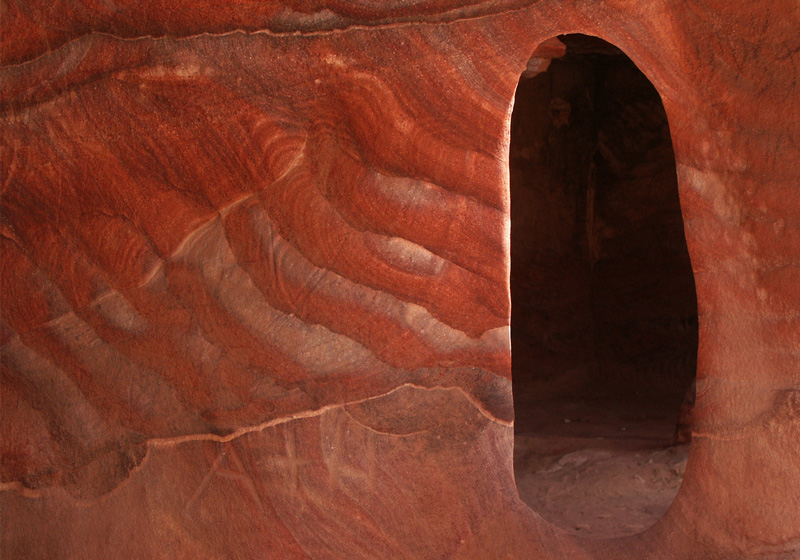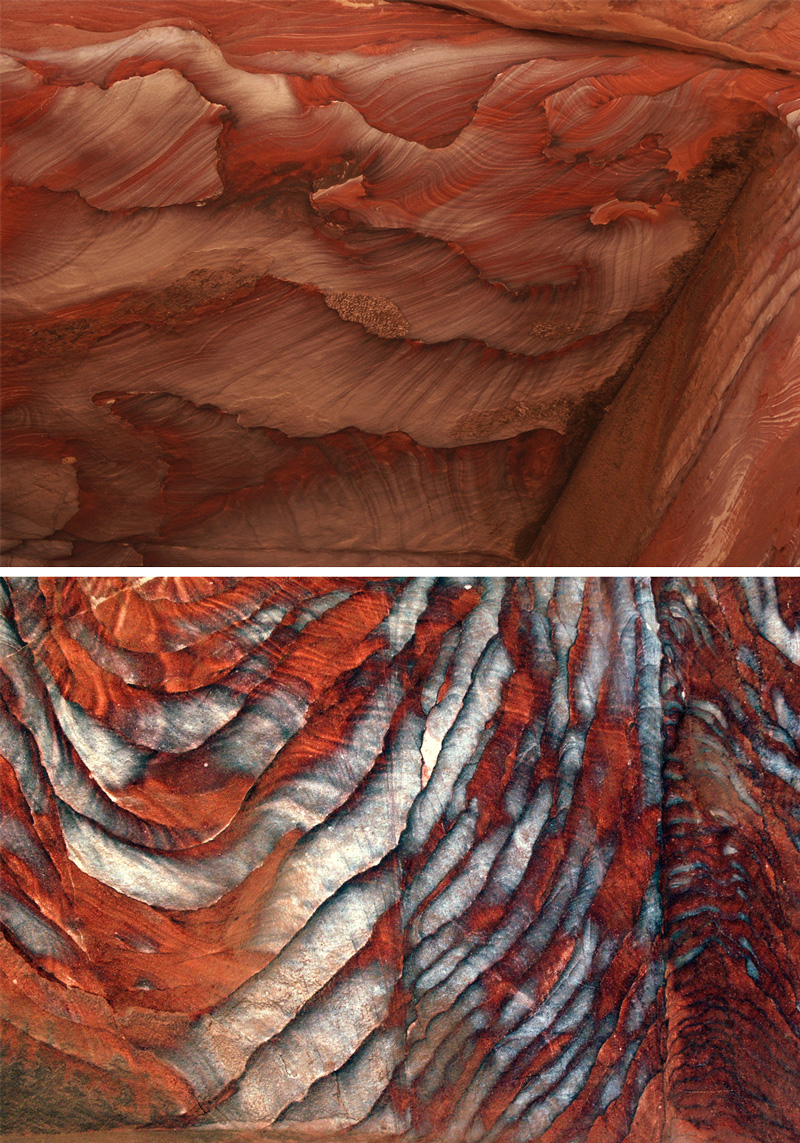Petra in Iron and Manganese
Petra represents a wonderful site where geology and archeology beautifully coexist. To better understand the monuments of Petra, one should pay some attention to the geology of the site, and attempt to understand the qualities of stone the site has given to the Nabataean carvers. It can be assumed that the sandstone layers in Petra were the leading factor behind the choice of this location, the scale of its monuments, the fine architectural details, and the good state of preservation the city of Petra has retained to this day.
It might be more appropriate to view Petra not as a collection of monuments with geological features in-between, but rather as a site of geological features with monuments adding to its glory.

Most of Petra monuments were carved in two layers of sandstone. These layers are referred to as “Disi Sandstone”, in the upper parts of the site, and “Umm Ishrin sandstone” below it. Together the two layers are named by geologists as “Rum Sandstone Group”, which is dated to the Paleozoic period, 540 to 260 million years ago. As is clear from their names, Petra was carved in the same layers of sandstone found in Wadi Rum. This layer also runs northward under all of Jordan covered by hundreds of meters of younger limestone layers. In Wadi Rum, Petra, and Dana, it was exposed due to the tilting of Jordan upward; the uplifting that created a general slope of all rock layers towards the northeastern direction. The same sandstone can also be seen on the eastern side of the Dead Sea. Further to the north and to the east, is can only be detected in the drillings of deep wells.
In Petra, the area around the Visitor Center, and all the way until the entrance of the Siq, you are surrounded by the upper “Disi sandstone”. This layer is hard, pale gray, and usually erodes forming dome-like shapes. All this sand was transported by ancient rivers, 520 to 490 million years ago, forming this thick sand-bed under the water of a shallow sea that covered all of Jordan. Carved out of this layer are the monuments of the Djin Blocks, Snakes Tomb and Obelisk Tomb, all seen before arriving at Bab Al Siq.
At the entrance of the Siq, just at the point where the sides close, and where the Roman arch once spanned across to mark Bab al Siq, you enter the older layer “Umm Ishrin sandstone”. The rest of the monuments of Petra, all the way to Al Dair were carved out of this layer. Some 20 million years older than the layer above, it is easily recognized by its beautiful patterns that look like abstract paintings. At the height of one or two meters, rising humidity exposes the most stunning patterns: stripes, in dramatic brown, red, orange, mauve and gray all grouped and braded in bands. This composition shows a rhythmic deposition of sand, brought by a braided river system that was forming this cross-bedding composition, like the work of a skillful sand-bottle artist, at work 540 million years ago.

To create this Petra sandstone, in these colorfast brilliant tones, nature used various iron and manganese oxides, together with hydroxide minerals within the sandstone. While the most ingenious artist would only deal with a two-dimensional composition on the surface of the canvas, the composition of sandstone in Petra is three-dimensional, 300-metres thick, and hundreds of kilometers deep.
In this wonderful, timeless artwork of nature, the Nabataeans carved their most impressive works: the Treasury, Al Dair, and hundreds of other monuments. Petra is overwhelmingly rich, it has stunning archeology and stunning geology; art on art.
Nowadays Petra is empty. It can be better understood with fewer tourists, when silence, fitting the grandiose nature of the place, brings about an ideal moment of contemplation and revision. Try to visit Petra without the usual concentration on monuments. The natural heritage of the Nabataean city, its geology, is overwhelming and worth an inspecting expedition on its own. You can play “amateur geologist”, enjoying the abstract art, the bigger monument that the Nabataeans didn’t do. Petra, in the rainy season, is much sharper, redder, and the dust of the tourists’ traffic is washed away, exposing the brilliant natural pigments. These days you can experience Petra as used to be seen by shepherds for a thousand years, before the site acquired its international fame. A good destination for meditation, exercising your eyes, and getting the needed break from depressing days watching television.